Re-Visioning the World through Multiple Perspectives
by Amy Edwards, Fifth Grade Teacher, Van Horne Elementary School
The ability to consider multiple perspectives is at the heart of a democratic classroom for students to share their voices and to reflect on ways of thinking about the world beyond their own. Rosenblatt (1938) states that democracy is based in the tension of honoring individual voices while at the same time remaining open to diverse points of view. Literature circles are an instructional engagement that supports democracy by providing a context where students share their responses as well as listen to and consider other perspectives, creating a balance between individual voice and group responsibility.
Literature circles that are based in critical literacy are particularly conducive contexts for encouraging students to go beyond their own ways of looking at the world. Lewison, Flint, and Van Sluys (2002) argue that critical literacy is a multifaceted practice characterized by four dimensions: 1) disrupting the commonplace, 2) interrogating multiple viewpoints, 3) focusing on sociopolitical issues, and 4) taking action and promoting social justice. Through critical literacy, students seek to understand experiences and texts from their own perspectives and that of others and to concurrently question these various perspectives. This focus on multiple perspectives encourages students to critically examine the social problems in our world and to consider new possibilities by asking questions about “what is” and considering “what if.” Considering multiple perspectives encourages students to think conceptually about global issues in their complexity.
Students in our school visit a classroom called the Learning Lab once a week to experience focused lessons around a big idea that can be carried over into the classroom curriculum. Teachers involved in the lab are also a part of a study group after school to examine themes, big ideas, and the wonderings of our students. Lisa Thomas, our Instructional Coach, facilitates the lab where much of our work is guided by the inquiry of the students. We also have a researcher working with us, Dr. Kathy Short from the University of Arizona, who is an expert in the field of international children’s literature. Our team is rounded out by an Arts Integration Specialist, Jenny Cain, who is a part of the OMA (Opening Minds through the Arts) program. Jenny integrates issues being explored by students in the lab with explorations around these issues through the arts. Engaging in these three settings allows students to look at the same concept or issue from different perspectives and to experience instructional strategies that involve the use of art, drama, music, and literature.
This inquiry-based program encourages students to think critically, conceptually, and collaboratively about our global culture and the world in which we live through multiple perspectives. Of course, the reality is that students often struggle with these ways of thinking. Encouraging fifth graders to consider perspectives beyond their own can be challenging, since many are developmentally at a point of trying out their own voices as distinct from the adults in their worlds. I realized that I needed to examine my field notes and student artifacts to reflect on the instructional interactions that seemed effective in engaging students to think beyond their own points of view across these three settings.
Exploring Perspective in the Learning Lab
Several instructional strategies were used within the lab to incorporate multiple perspectives. One strategy that Lisa used was to always read aloud books written by authors from a range of backgrounds within our various inquiries and to point out the author’s background before sharing a book. Students quickly realized that they needed to know if an author was a cultural insider, had visited the country, or had some kind of experience related to the content of the book. They saw a need for that context to consider an author’s perspective and how and why authors write about a particular topic as well as to position themselves in critically discussing a book. The significance of this positioning was evident when the librarian commented that she started to read a book with my students in the library one day and they immediately stopped her and asked her to first tell them about the author.
Another strategy was the use of a simulation along with text sets to explore many sides of the same issue. We had engaged in a semester-long exploration of journeys that led to an exploration of Forced Journeys due to students’ interests in issues of war and refugees. To encourage students to take on a different perspective on these issues, we invited them to participate in a simulation that required them to pretend they had to leave the U.S. to flee because war and fighting were at their doorsteps and they were no longer safe. We wanted to challenge students to consider these issues through engaging in a role that was outside their own world views. Through acting in role and taking on a different way of thinking from within that role, we hope that students would try out a different frame for thinking about these issues.
A series of picture books were read aloud in the lab to engage students in our exploration of Forced Journey. Lisa was careful to explain each book’s author and perspective before reading to the students. When Lisa read Ziba Came on a Boat, (Lofthouse, 2007), students discovered that the author was an Australian teacher who had volunteered to help refugees from Afghanistan. She was inspired to write after hearing stories of refugees from the Hazara community who now live in Perth. Eve Bunting’s Gleam and Glow (2001) tells of a refugee family from Bosnia-Herzogovina who had to leave behind several goldfish in their fishpond. The fish survive and multiply as a symbol of hope for the family when they return to the ruins of their burned-out home. Bunting, an American author, has written many books highlighting human rights both in and out of the U.S. and while she did not have experiences in that country, she includes an author’s note about the real incident upon which the book was based. Being aware of the author’s stance became increasingly important to my students as we continued our study.
As part of the simulation, students were given a list of seven countries that would accept a limited number of refugees and had to learn about the culture after selecting from what was available. They were told they would have to leave their homes within the next two weeks and needed to learn as much as possible about where they were moving and what life might be like in that country. The text sets included fiction and nonfiction books as well as maps and books in the language of that country. They talked about what was most important to them in their lives in Tucson. Based on what was significant to them as well as what they thought they would most need in their new country, they packed one small suitcase and indicated why they selected each item. They were told that it could take months to get to their new homes and that their families could be separated in the meantime. The informal conversations among students as they read their text sets and packed their suitcases indicated they were stepping into role as refugees and considering issues that had never occurred to them before. They were intrigued and concerned about the simulation, even talking with their parents about the issues. One boy even began learning Russian with his father. Using forced journey as a frame, students thought about immigration through a new lens. Because we live so close to the border with Mexico, our news in Tucson is filled with stories about people crossing without documentation, but rarely told from their perspective.
After our study of forced journeys, we shifted our focus to other journeys and looked at human rights. One of the instructional strategies used within that study to expose students to multiple perspectives involved considering different characters’ points of views. After reading aloud The Lady in the Box (McGovern, 1997), we discussed homelessness. Students expressed concerns for the homeless woman in the story and several shared how lucky they felt when they saw someone who was homeless and related stories about volunteering in soup kitchens. Then the conversation turned to personal connections with homelessness, and one student who was very skeptical asked, “How do we know they are really homeless?” Others added their doubts about the motives of some people who beg for money on the sides of the road. They shared their thoughts about drug and alcohol abuse among the homeless and wondered whether or not the people on those corners were really homeless and in need of help. Several thought that some homeless people like being homeless. They told stories about a time when they or someone in their family had tried to help a homeless person and were disappointed with the results. They were convinced it was a lifestyle. A couple of kids chimed in saying that it wasn’t their fault and that people make mistakes and don’t deserve to be homeless, but overall the students seemed to have moved to a perspective of blaming the homeless for their situation.
To provide another perspective on homelessness, Lisa read Way Home (Hathorn, 1994) and engaged students in a drama using role-playing to highlight different points of view. The story is told in first-person by Shane, a young boy who protects a stray homeless cat as he makes his way through the dangerous streets on his way home. He speaks to the cat affectionately and reassures it that everything will be fine once they get home, where he has milk and a nice bed for her. On the way home, the boy passes street bullies, a lavish home with a pampered cat in the window, people driving through the rain in their warm cars, and customers eating in a diner. Only on the last page, when the boy arrives home, does the reader realize that his “home” is a cardboard box in an abandoned building.
Before reading the story, Lisa gave students three minutes to do a “quick write” on their thoughts, feelings, and attitudes about homelessness. She read the story and then engaged them in a drama that involved taking on different perspectives. Half of the class chose to become one of the characters in the book and the other half became reporters interviewing that character about their perspective on homelessness. After the interview, students were to report back to Lisa as the newspaper editor on what they had learned through their interviews. The experience ended with students completing another “quick write” about their opinions on homelessness.
The discussion following this activity revealed that the acting in roles supported students in considering how others might view the issue of homelessness. When Andres interviewed the cat owner in the fancy home, he found out that they never even thought about using the money they spent on the expensive cat collar to help a homeless person. Ryan interviewed Shane and found that he liked him and thought he should be helped. He said Shane was afraid to live on the street and that the gang members had guns. Alex interviewed a person in the restaurant and found out that they felt sorry for the homeless and once in a while helped them out by donating food and money to shelters. Susana interviewed the person with the fancy cat and found that they believed the homeless to be lazy. She reported the person thought they deserved to be homeless.
In looking at the two quick writes, written before and after the book and drama experience, I saw clear evidence that students had changed their attitudes and perceptions of the homeless with many concerned about finding ways to help people in that situation. The drama allowed them to try on different perspectives and their sharing from the interviews challenged them to consider a greater complexity of issues. I also think that before we read the book, the attitudes of a few dominant students influenced the other students’ opinions. After the drama, they were more willing to express their opinions because of this common experience.
Exploring Perspectives in the Classroom
We used various strategies to highlight multiple perspectives in the classroom. We considered information about the authors in the books we read, read a range of books on particular issues and used art to think about and share our views with each other. We also had discussions in literature circles on books with themes that expanded on thinking from our lab interactions.
One book that I read aloud to the class, The Green Book (Walsh, 1986), provided a way for us to transport our thinking about forced journeys into the classroom. This short chapter book opens with a catastrophic event on the Earth that has forced people to leave the planet. They are allowed to take one personal belonging to Shine, their new home. As the events unfold, the significance of each item becomes known as we see how the refugees from Earth use the items. This view of emigration was not the typical point of view shown on the 5 o’clock news. Instead of looking at the issue of being a refugee on a global scale, students were able to see it on a larger, intergalactic scale.
In literature circles students read novels set during the Revolutionary War in the U.S. as part of the fifth-grade social studies curriculum. I felt it was important to choose books that gave at least a glimpse of both sides of the opposing forces in that war, especially since most of the history taught in American classrooms is ethnocentric and does not take any other point of view into consideration. The history books portray the majority of the colonists as Patriots, when most actually had no opinion as to whether or not to fight for independence. Many wanted to leave well enough alone. The points of view of Loyalists or those not taking sides are not heard.
Any country tends to portray a war as one in which “we” are always the good guys. The novels we read provided students with the views of British soldiers, Loyalists, the German Hessian mercenaries, and Patriots about the war and their lives. We read George Washington’s Socks (Woodruff, 1991), Sarah Bishop (O’Dell, 1980), My Brother Sam is Dead (Collier & Collier, 1974), and The Fighting Ground (Avi, 1984). We looked critically at these books by examining the attitudes and behaviors of the various groups and peoples in each book, allowing students to see a different perspective than what is normally presented in history books.
Another significant read aloud was a Sudanese immigrant novel, Home of the Brave (Applegate, 2007), where we discovered that the author was an American who wrote from an outsider’s perspective concerned about immigrants in the U.S. She included a note in the book stating that an expert in the Sudanese culture from the local Refugee Employment agency, Lutheran Social Services of Minnesota had checked the book for accuracy. My students loved this read aloud as they imagined the ways in which Kek, a young boy from the Sudan, has to acclimate to Minnesota. The first-person voice of the book helped students put themselves in Kek’s place and explore his perspectives on their country and ways of life. Michael noticed that sometimes when you go from country to country, the feelings are similar to our’s in going from school to school. He noted that friends are different and that schedules can be different too. Students commented, however, that to fit in was much harder for Kek because of the language and cultural differences.
To provide yet another point of view and further their thinking in the classroom, I read aloud Ask Me No Questions (Budhos, 2006), the story of a family who emigrated without documentation from Bangladesh and were living in New York City at the time of 9/11. Suddenly, their world shifts and they find that being Muslim has become synonymous with being a terrorist. A Homeland Security law requiring Muslim men over the age of 18 to register leads them to flee the U.S., but their father is detained and jailed at the Canadian border because his visa has expired. The story highlights the tensions between two teen-age sisters, their struggle with prejudice, and their quest to become citizens as they try to get their father released. Teachers at their school ask no questions even when Aisha’s college plans fall apart due to their immigration status. In class we talked about what it would be like to be Nadira and Aisha as outsiders living in another country and being viewed with suspicion while trying to fit in. Through their discussions, students explored many ideas about the meaning of the story including not judging someone by how they look, taking risks, not giving up hope, fear, and fitting in. The simulation in the lab had forced kids to take the perspective of an outsider. This novel forced them to look at the same situation but from the perspective of someone living in their country, giving them greater insights into the issues of immigration. These perspectives are evident in the web of the big ideas they identified from the book and their sketch to stretches of the meaning of that book. In these sketches, they used visual images to symbolize the meanings that were significant to them from the book and our discussions.
Maya stated that her sketch illustrates the big ideas she found in the book as symbolized by a “box of trust” and a “garden of hope.” The box is artfully represented by two outstretched arms with the palms pressed together in prayer. The rainbow symbolizes believing, while the flower depicts courage. The dice reflects the risks taken by the family as they try to blend in while living in the U.S. without documentation. The bright colors show her strong emotions for this family.
Angel believed that the big idea of the story is risk. His sketch shows large dice that are being rolled to represent the risks the family took daily in living and working in the U.S. without documentation. One of the girls, Aisha, loses hope for a scholarship even though she is ranked at the top of her class. She knows she will not qualify because of her legal status and will probably be deported if the family’s situation is found out. Bravely she discloses in her valedictorian speech at graduation that she and her family are illegally in the country, taking a huge risk.
In the lab, Lisa had read aloud The Carpet Boy’s Story (Shea, 2003), a picture book on child labor in our world today. The book was written by an author from Connecticut who has other books on human rights issues. The book is narrated by Nadeem who yearns for schooling for himself and the other children who labor in a carpet factory in Pakistan to repay loans from the factory owner to their parents. Nadeem is inspired by Iqbal to lead his fellow factory workers to freedom. Although the story is fictional, the character of Iqbal was a real person whose dedication and work in the fight against child labor received international recognition. He was given a scholarship and spoke at anti-child labor conferences. Upon return to Pakistan he was shot and killed while he was riding his bike in his village when he was 13 years old.
In their discussion of this book, many students assumed that the story took place long ago in a similar time period as slavery in the U.S. and were surprised to learn that the story is in present times. Some thought Iqbal was shot because his country was having a war or conflict, while others thought the carpet factory owner shot him because he escaped. They did not understand activism and the danger of going against powerful people.
To get a different perspective on Iqbal’s life and work against child labor, I read aloud a short chapter book, Iqbal (D’Adamo, 2001). I wanted to see what influence reading a different book about the same events and issues would have on student thinking. Both of these books are written by authors who are outsiders to the Pakistani culture but who often write about human rights. Iqbal is classified as a docu-novel, originally published in Italy, which focuses on Iqbal Masih, the young activist who brought global attention to contemporary child labor in Pakistan and around the world. His story is told from the point of view of a fictional character, Fatima, who works beside him in a dirty, dusty carpet factory to work off the debts of their families. Iqbal showed his peers and the world the necessity of rebellion and ran away to join with activists working to free children from this horrible fate. After reading Iqbal, my students had a much better understanding of the work of activists and the risks they take to change the world for the better. They realized that children can be involved in taking risks to make changes for social justice in our world.
Throughout the rest of year as we engaged in various studies, students wanted to look for different points of view on issues. In introducing new books, I was careful to include information about the author’s perspective or background and soon the kids regularly asked questions about where a story took place or where the author was from on their own. I overheard a conversation between Queta and Marshall that reflected their ability to consider multiple perspectives. Queta commented that she thought something was weird about a particular culture in Zangbu’s Story (Sherpa, 1997). Marshall replied, “That’s not weird to them. We’re the weird ones if you look at it from their point of view.” This ability to view life from multiple perspectives will be a valuable tool for students in the future, especially in looking closely at difficult issues.
Exploring Perspectives in the OMA Classroom
Within the OMA setting, multiple perspectives were highlighted by the use of music, drama, and visual text, as well as written text. In looking at ways to integrate the work in OMA with the fifth grade curriculum and our broad focus on journeys, Jenny and I thought it would be important to look at the journey of Africans as they were brought to the Americas through slavery. This provided a connection to their previous work on forced journeys. The context that most students had for slavery was that of their lives on the plantation systems of the Old South. Jenny started her focus on the forced journey of the Africans from the perspective of their lives in Africa. She felt it was important for students to recognize that native people in Africa had rich lives steeped in cultures that had survived for centuries. She focused particularly on the cultures of Africans from the western coast who had their own tribes, languages, customs, and systems of farming. She was careful to use the word African, and not slave, when referring to this population during the time they lived in Africa.
Using the soundtrack from motion picture “Amistad” and the illustrations from the wordless book, The Middle Passage: White Ships/Black Cargo (Feelings, 1995), Jenny told the story of the slave forts in Ghana and other Atlantic countries of Western Africa. Students learned about the “Door of No Return” through which slaves left their homelands. The visual images brought alive the Middle Passage and the horrible conditions of the slave ships. The expressive music and devastating images brought students into the experience of slavery in a way that standard history books could never do.
In addition to the illustrations and music, Jenny used a drama technique called tableau to allow students to kinesthetically represent their learning through multiple perspectives. A theatre convention, tableau is a still, silent performance that involves three-dimensional representations. I tell students it is a frozen picture using your whole body. Wilson (2003) argues that this drama strategy is significant because, “Tableau helps promote comprehension and perspective, but also offers children a non-language- dependent medium through which to think about ideas embedded in literature and to grow as thinkers” (p. 375).
There are several variations when using tableau and Jenny used a method called “tapping in” with my students. Tapping in allows the participants to speak in character about what they see happening in their particular scene when the mediator taps them on the shoulder. In groups of 4 or 5, students were asked to arrange themselves in frozen positions to portray scenes from the middle passage. One group was asked to demonstrate an African village as the slave traders are invading and the tribe’s ruler is trying to save them. Sarena, an extremely shy and quiet African American student who often has trouble speaking up, needed a little help with this activity but later admitted feeling empowered by her role as the ruler. Christian’s group portrayed a scene on a slave ship crossing the Atlantic. This tableau involved the captain of the ship and the first mate whipping slaves to keep order and control of their cargo. When Jenny tapped in to Christian’s character, the ship’s captain, his perspective brought me to tears. He held a frozen stance of himself whipping a young slave and declared that this would be his last voyage and that he regretted getting into this business. It just wasn’t worth what he said was blood money. You could hear a pin drop throughout this activity as this method evoked so much emotion from everyone in the room. It was a very powerful tool and one that gave the children a whole new perspective through literature, music, and performing art.
Next the students learned about the old Negro spirituals to understand the ways in which enslaved people relied on music to help them cope and as maps to help them escape to the north, providing another connection to our big idea of journey. Our OMA lab uses instruments and music theory designed by Karl Orff. Students learned to play the songs in six parts using ostinato, or repeating patterns in the music, with instruments, such as the alto and soprano glockenspiel, xylophones, and the soprano, alto, and base metalophones. Students had to keep all parts going at once, as they were cued by certain words in the song. They had to sing, keep a steady beat, and keep track of the part they were responsible for, all while listening to others. It was magical. Not only did they get a feel for the music by being taught to play, they understood the reason behind the music as so much more than entertainment.
Final Reflections
As students came to realize that every issue has multiple perspectives, they took on a much more critical view about their world and lives. Having students participate in open conversation has often proven that the unexpected happens in classrooms that are democratic. Democratic teaching fosters multifaceted readings and discussions that are built on complex layers of agreement and disagreement. Education that promotes transformation always entails some significant change in perspective (Pradl, 1996). Continuously offering opportunities for students to look at the world through others’ eyes has become very important to me as an educator. Knowing that everything they read is written with some type of bias gives my students an understanding and critical edge they will need to negotiate the world. It gives them the power to question and to seek answers to complex issues, instead of agreeing to simple solutions.
Providing opportunities for frank and open discussion about real world problems and encouraging students to consider those problems from various perspectives through listening to others has become the heart of my teaching. Some classrooms seem to be driven by data and facts. I want more for students. I want them to be able to critically examine issues and voice their opinions, while also listening to each other and allowing their thinking to be reshaped in the process. My work as a teacher is not to define the issues for them, but to engage them in learning experiences and literature that support and challenge them to define these issues for themselves. Watching their critical engagement with each other around tough issues has become my definition of effective teaching. Along with my students, I have a new vision of what is possible for my life and for how I think about and interact with others in the world.
References
WOW Stories, Volume I, Issue 2 by Worlds of Words is licensed under a Creative Commons Attribution-NonCommercial-ShareAlike 4.0 International License.
Based on a work at https://wowlit.org/on-line-publications/stories/storiesi2/.

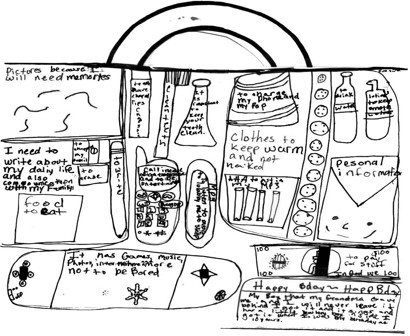
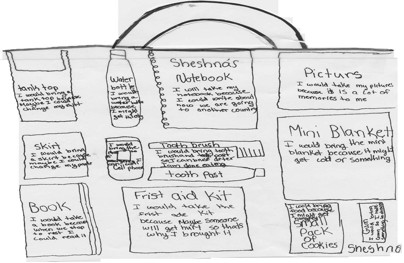
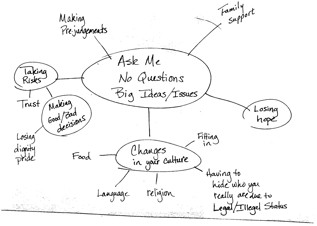
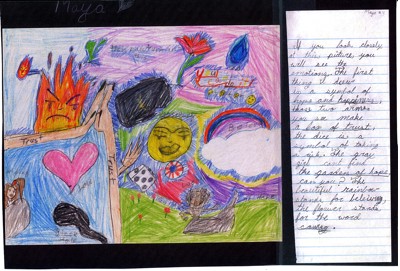
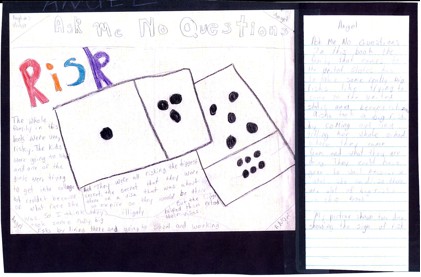
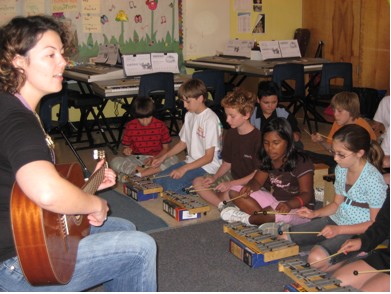
One thought on “WOW Stories: Connections from the Classroom”